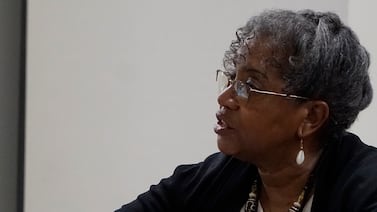This is a guest essay for Healthbeat. Public health, explained: Sign up to receive Healthbeat’s free national newsletter here.
As clinicians and public health leaders, we’ve spent our careers in both the exam room and the outbreak command center. And we’ve seen firsthand how clinical care and public health reinforce one another in preventing illness, delivering care, and protecting communities.
Now, we’re watching as these interwoven threads are snipped, one by one. Whether it’s a health outreach team in a neighborhood, a clinic-based prevention program, or critical systems like Medicaid, each cut carries consequences for patients, communities, and the health care system itself.
Whether they know it or not, clinicians across the country rely on public health every day. They refer patients to public health programs outside clinic walls that are essential to what happens inside them — services like home inspections for lead, tobacco quitlines, and maternal health programs. And importantly, they count on public health to spot trouble early, to guard against invisible threats, and to step in before a crisis hits.
Take the example of lead poisoning. A child with elevated blood lead levels may not present to their pediatrician with obvious signs right away. But even small amounts of lead exposure can permanently harm a child’s developing brain, affecting their language or behavior. Public health agencies act quickly to identify where the lead exposure is coming from and then work to remove it from the child’s environment. Scrap those services, and more children will suffer brain damage before anyone intervenes — harm that is entirely preventable.
Funding cuts to public health also mean missed opportunities to test, treat, and contain a disease outbreak. Right now, Maine is experiencing the largest HIV outbreak in the state’s history, already straining local health care systems. The Centers for Disease Control and Prevention team that would typically be deployed to assist? They’ve been held back by workforce reductions.
Meanwhile, a surge in measles cases across the United States reminds us of what’s at stake if immunization efforts falter. The next season of flu, Covid, and other respiratory illnesses is just around the corner — a time when clinics and hospitals are perennially overflowing. That strain will worsen if budget cuts leave fewer people vaccinated and protected.
As public health services are hollowed out and Medicaid cuts loom, the cumulative impact will be most deeply felt by those already struggling to access care, especially in rural and underserved communities. Medicaid covers individual health care, but it also plays a less visible role in funding prevention and community health services across the country. The compounding effects of this disinvestment will fall most heavily on people already facing barriers to care.
Importantly, public health and Medicaid cuts don’t make costs disappear — they just shift them downstream to the health care system. Hospitals are already seeing the fallout: longer wait times, overburdened staff, and sicker patients requiring more intensive — and expensive — care.
Modernization is undoubtedly needed across public health and health care. And some leaders argue that these cuts are necessary for fiscal responsibility. Yet the scale of the proposed cuts risks eliminating vital programs outright, adding costs down the road, rather than making our systems more effective. Consider that the proposed cuts to HIV prevention programs would lead to thousands more people with HIV, costing the health system an estimated $52.4 billion over patients’ lifetimes.
A different path is possible, one that knits together the threads of health care and public health. Renewed partnerships for data exchange, strategy setting, and sharing of staff point the immediate way forward; tapping into new sources of investment would help further protect lives and livelihoods.
Health systems already have choices to weigh: Do they consider taking on traditional public health roles to recapture the benefits that prevention services once provided? Will hospitals be expected to send nurses into homes to ensure tuberculosis treatment is completed? Or dispatch staff to remove lead from children’s homes? Without this much-needed support from public health, we’re asking clinicians to do more with less — essentially tying one hand behind our backs.
Health care alone cannot fill these gaps, and we don’t have to wait for Washington to act. States, health systems, and communities can lead now by forging stronger partnerships with public health, pooling data and dollars. Ignoring the gaps left by public health disinvestment won’t meet patients’ needs — but facing them together, with urgency and intention, just might.
Dave A. Chokshi, M.D., MSc., former New York City health commissioner and chair of the Common Health Coalition; Chelsea Cipriano, MPH, managing director of the Common Health Coalition; and Charlene Wong, M.D., MSHP, former senior adviser for health strategy to the CDC director, are the authors of More Illness, Greater Cost: The consequences of public health cuts for the health care system, a special report from the Common Health Coalition.
The coalition brings together leading health organizations in pursuit of a reimagined health system in which health care and public health systems work hand in hand. Its founding members are the Alliance of Community Health Plans, AHIP, American Hospital Association, American Medical Association, and Kaiser Permanente.







